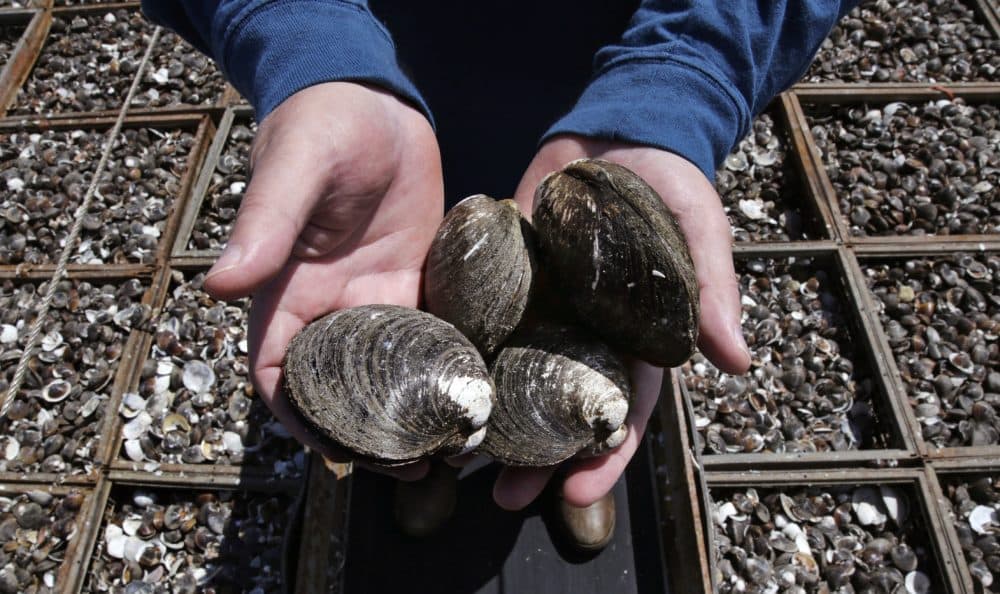Advertisement
Inside Rhode Island's Quahog Industry, A Shrinking Workforce

"What I’m trying to do is I’m trying to get underneath all the shells and try to get to the quahogs,” says Dave Ghigliotti. He’s been a shellfisherman in Rhode Island for over 30 years. I went with him to dig for quahogs just off of Rocky Point State Park in Narragansett Bay.
There’s some debate over the name quahog. Some people use it to talk about the biggest clams. But basically all the hard shelled clams we eat here in Rhode Island are one species: the Northern Quahog. Other names you might have heard — like littlenecks, topnecks, cherrystones or chowder clams — describe the different sizes.
When Ghigliotti got into the business, there were about 2,000 licensed commercial quahoggers in the state. Now, the number is less than half that.
Some left the industry because the money isn’t great. Ghigliotti says clam prices have barely gone up since the '80s. And, he adds, quahoggers have to compete for space on the bay with the growing number of oyster farms.
“That industry’s growing, so they’re always looking for space. And the problem is, once they lease a piece of real estate we can’t fish it anymore. We’re really pretty migratory. You see these guys here today, but once this place has had kind of its day, we move on to another place,” Ghigliorri says.
Quahoggers worry their space to dig could become more limited if the number of oyster farms continues to grow.

Shellfish wholesalers like Greg Silkes are seeing the clam’s more glamorous cousin take off. His dad started the company, American Mussel Harvesters, back in the mid ‘80s.
Silkes remembers, “As a kid, we sold three to four brands [of] oysters, and now we sell 40. It’s just amazing. And every year there seems to be more and more brands of oysters popping up.”
His own company farms mussels and four different types of oysters. And he says, he's seen quahoggers switch to the oyster farming business.
It is possible to farm clams — Silkes has bought from clams farmed in the Mid-Atlantic. But clams grow more slowly, so it’s harder to make a profit. Plus, Silkes says, people here in Rhode Island just don’t want farmed quahogs.
“The folks who are loyal to the Rhode Island clam, they’re not going to accept the alternative,” Silkes says.
And Ghigliotti agrees: “We don’t want caged quahogs! How could you do that to that littleneck! Let em run! Let em be free!”
Advertisement
Free, that is, until they’re scooped from the mud to land on the rawbar at Whaler’s Brewery. Andrew Greenleaf and Jon Robbins each picked up a sample.
“Those are really fresh,” Robbins says. Greenleaf jumps in, “That one I put a little cocktail sauce on there, but uh sweet, nice and briny, nice and salty. That’s what you want in a fresh quahog.”
With quahogs like these, who needs oysters. Shellfisherman Dave Ghigliotti thinks the state is ready for another clamming boom.
This story was originally published by Rhode Island's The Public's Radio.
This segment aired on April 3, 2019.